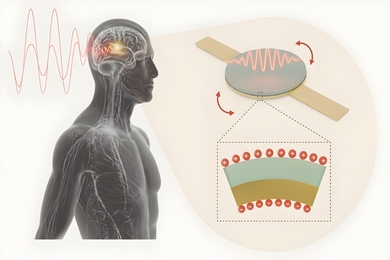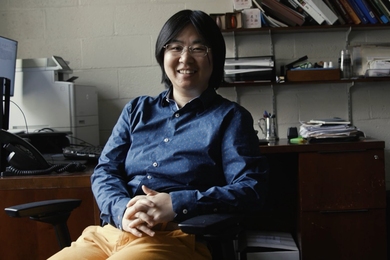An MIT memorial service is being planned for Roger G. Burns, professor of mineralogy and geochemistry in the Department of Earth, Atmospheric and Planetary Sciences. Professor Burns, 56, who lived in Cambridge, died January 7 of cancer in Mt. Auburn Hospital in Cambridge.
He was well known for his major role in developing mineral spectroscopy and as the author of an influential book, Mineralogical Applications of Crystal Field Theory, first published in 1970 and reissued in a second edition in 1993. It showed clearly how laboratory study of minerals interpreted in the context of crystal field theory leads to an understanding of mineral structure that could not be obtained by other research techniques.
Professor Burns, born in Wellington, New Zealand, received his bachelor and master of science degrees from Victoria University of Wellington and a PhD in geochemistry from the University of California, Berkeley, in 1965. During his graduate studies in the United States, Dr. Burns recognized that there was much to be learned in applying the instrumental and theoretical capabilities of chemistry to geology.
His PhD thesis was a breakthrough in using chemical principles to understand the bonding environment of transition metals in silicate minerals. In particular, he was a pioneer in using absorption spectra to study minerals. In this technique the selective absorption of light with different wavelengths reveals the location and atomic coordination of transition metals in minerals.
Professor Burns joined the faculty at MIT in 1970 as associate professor and within two years he was promoted to professor. At MIT his expertise in mineralogy and geochemistry and rapport with students led to innovative research. In addition to his energetic pursuit of the application of spectroscopic techniques to mineralogical problems, he broke new ground in several areas of earth and planetary science. In the 1970's, he and his wife, Virginia, were instrumental in characterizing and understanding the ubiquitous formation of manganese-rich minerals on the sea floor.
In recent years Professor Burns continued his interest in directly relevant research by evaluating the reactivity of zeolites in proposed repositories for high-level nuclear waste.
He also made major contributions to understanding the composition and mineralogy of the Martian surface, culminating with his contributions a workshop titled "Chemical Weathering on Mars." Professor Burns' last words on the subject will appear in an abstract for the 1994 Lunar and Planetary Science Conference.
During his career Professor Burns supervised 23 PhD and 10 master's theses, published more than 140 research papers, served as an editor for several journals and books, and received many honors, awards and fellowships, including an honorary MA in geology and a DSc in mineralogy from Oxford and a Guggenheim Fellowship in 1991.
Professor Burns' non-scientific interests included distance running. He often commuted this way between MIT and his Cambridge home, a distance of about five miles, and he was a frequent finisher of the Boston marathon.
His survivors include his wife, Virginia, of Cambridge, and his sons, Kirk of Marietta, GA, and Jonathan of Cambridge.
A version of this article appeared in the January 26, 1994 issue of MIT Tech Talk (Volume 38, Number 20).





